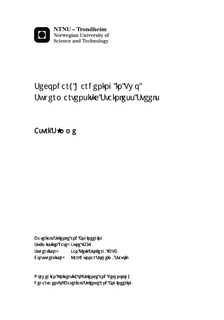| dc.contributor.advisor | Solberg, Jan Ketil | nb_NO |
| dc.contributor.advisor | Solheim, Karl Gunnar | nb_NO |
| dc.contributor.author | Sømme, Astri | nb_NO |
| dc.date.accessioned | 2014-12-19T13:26:22Z | |
| dc.date.available | 2014-12-19T13:26:22Z | |
| dc.date.created | 2012-11-08 | nb_NO |
| dc.date.issued | 2012 | nb_NO |
| dc.identifier | 566056 | nb_NO |
| dc.identifier | ntnudaim:7957 | nb_NO |
| dc.identifier.uri | http://hdl.handle.net/11250/249060 | |
| dc.description.abstract | Since the late nineties weldable supermartensitic stainless steels (SMSS) has been used in subsea flowlines, and more than 400 km is installed. Hydrogen related problems in the weld fabrication stage or hydrogen induced stress cracking (HISC) due to hydrogen embrittlement under cathodic protection have been reported and testing to better understand the behavior of these materials is of interest. The present work is focusing on the effect of double heat cycles on carbide precipitation and secondary hardening in two high grade SMSS, one alloyed with Ti and one not (0.007% Ti). The experimental work included heat treatment of both steels in single and double cycles in both oven and in induction heating weld simulator. All specimens were heated to 1000 degrees celsius for 30 min to austenize the material and air cooled before simulating second heat cycles of 1-60 min in the temperature range 500-600 degrees celsius. The microstructures resulting from the heat treatments were characterized by standard metallographic techniques, hardness testing and transmission electron microscopy (TEM). The results from hardness testing show a secondary hardening effect in both steels for all temperatures tested, with a maximum for samples treated at 550 degrees celsius. For all samples there was also a significant drop in hardness from the hardness of the single cycle sample to the 1 min tempered double cycle samples. From investigation in TEM it was found that, in the steel alloyed with titanium TiC precipitate during tempering and in the steel not alloyed with titanium Cr23C6 precipitate during tempering at 550. The difference in secondary hardening found is explained by the difference in carbide precipitation mechanism. In the steel alloyed with titanium a higher secondary hardening effect was found. No carbide precipitation was found in the single cycle heat treated state of the steels. | nb_NO |
| dc.language | eng | nb_NO |
| dc.publisher | Institutt for materialteknologi | nb_NO |
| dc.subject | ntnudaim:7957 | no_NO |
| dc.subject | MTMT Materialteknologi | no_NO |
| dc.subject | Materialutvikling og -bruk | no_NO |
| dc.title | Secondary Hardening in Two Supermartensitic Stainless Steels | nb_NO |
| dc.type | Master thesis | nb_NO |
| dc.source.pagenumber | 64 | nb_NO |
| dc.contributor.department | Norges teknisk-naturvitenskapelige universitet, Fakultet for naturvitenskap og teknologi, Institutt for materialteknologi | nb_NO |

